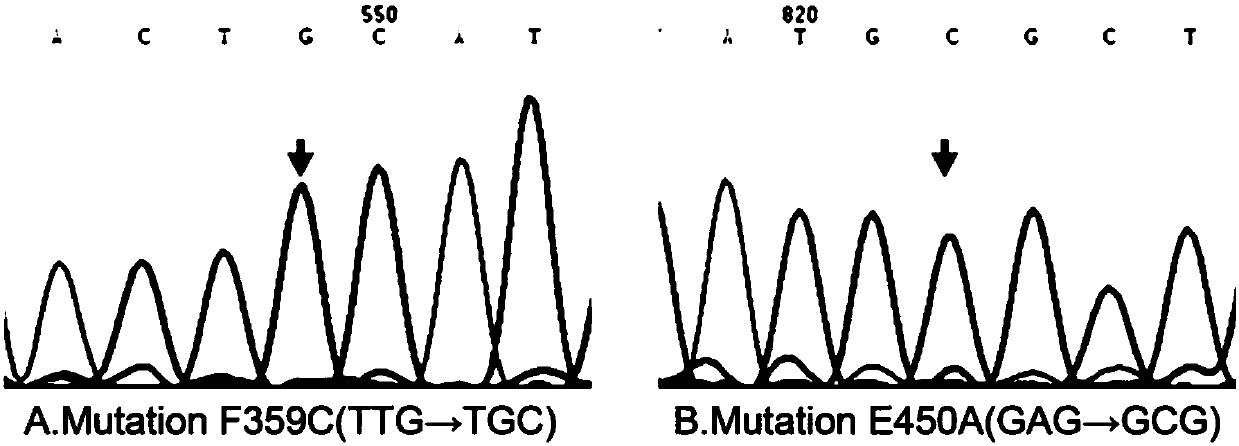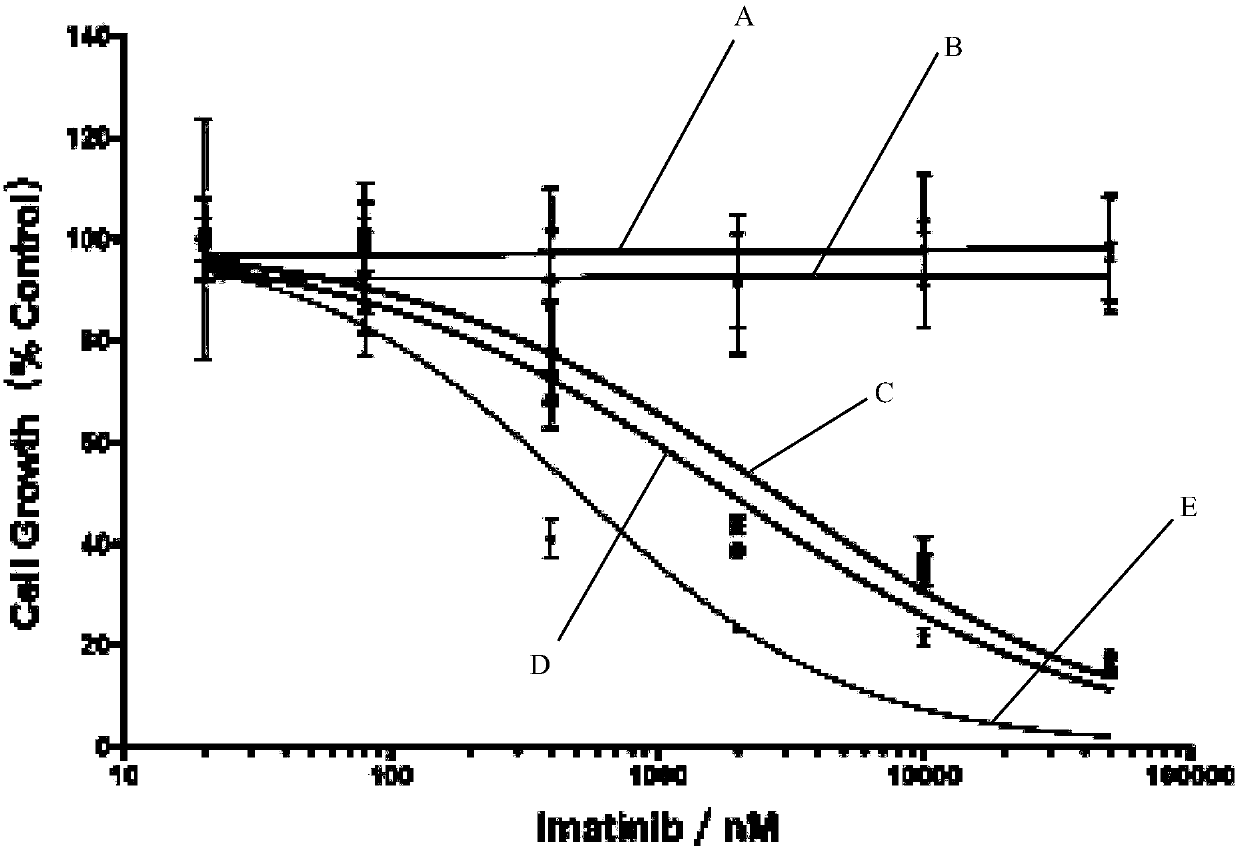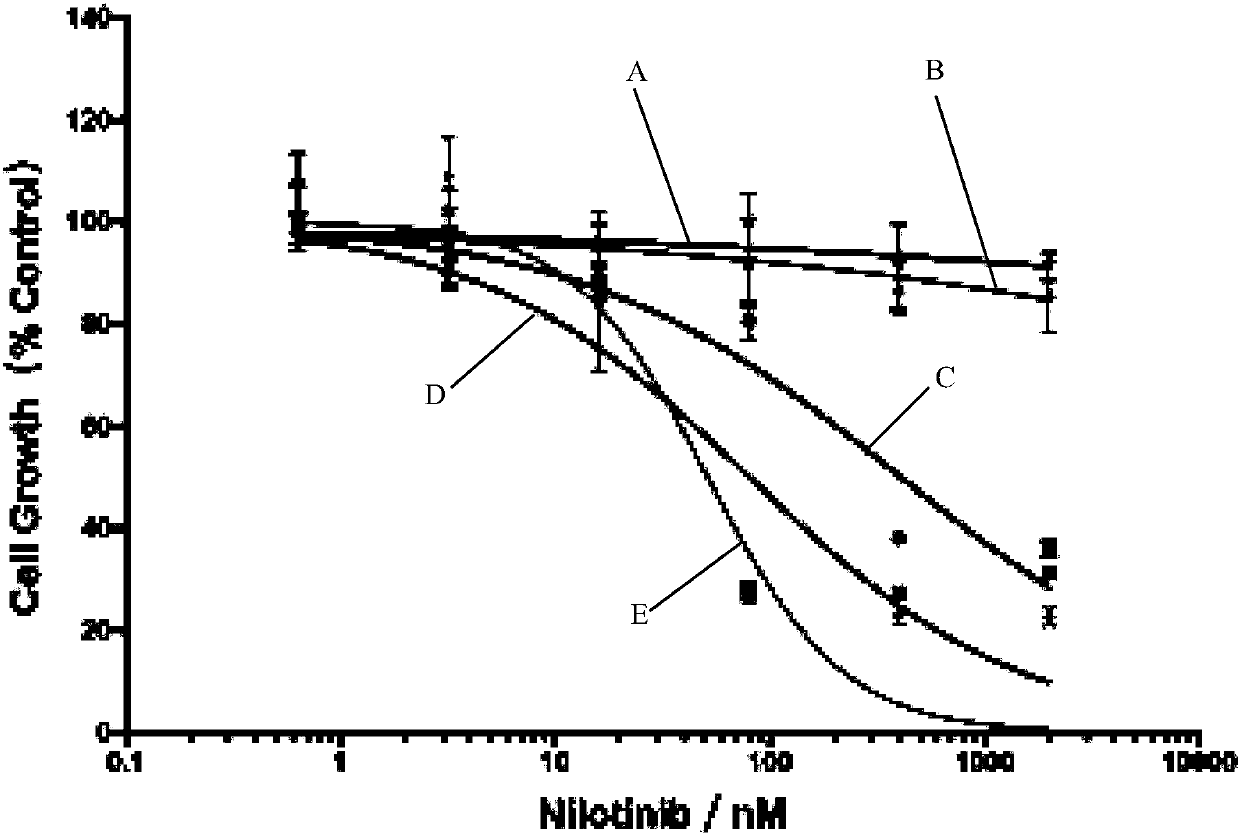BCR-ABL1 kinase structural domain compound mutant and kit
A technology of BCR-ABL1 and kinase domain, applied in the field of BCR-ABL1 kinase domain mutation and detection kits for the mutation, can solve the problem of inability to analyze the relationship of subcloning evolution of multiple mutation points, low sensitivity and difficulty in accuracy Mutation frequency and other issues to achieve the effect of improving the level of molecular detection and shortening the diagnosis time
- Summary
- Abstract
- Description
- Claims
- Application Information
AI Technical Summary
Problems solved by technology
Method used
Image
Examples
Embodiment 1
[0024] 1. NGS detection of mutations in the kinase domain of BCR-ABL1
[0025] Firstly, RNA was extracted from the collected 40 drug-resistant samples, reverse-transcribed into cDNA, and the BCR-ABL1 gene was amplified by PCR. The upstream and downstream primers for amplification were shown in Table 1. The amplified products were sequenced by next-generation sequencing (NGS) (depth greater than 10000×). NGS sequencing improves the sensitivity of mutation detection by increasing the throughput and repeating multiple scans. In CML patients who have failed multiple TKI treatments, NGS can identify low-level mutations below the detection limit of SS (abundance <10%-15% ), and in many cases reveal complex clonal textures, thereby identifying compound mutations. NGS test results showed that two mutations, F359C and E450A, were present in the same specimen of patient CP-05, which belonged to multiple mutations (Table 2).
[0026] Table 1: Primer sequences
[0027]
[0028] In T...
Embodiment 2
[0038] 1. Verify the TKIs sensitivity of the new compound mutants discovered
[0039] According to the results of the detected mutation sites, the overexpressed plasmids and viruses of each mutant were constructed to obtain the BaF3 cell line stably expressing wild-type and mutant BCR-ABL1 fusion proteins, and the effect of TKIs drugs on cytotoxicity was determined by CCK method.
[0040] The results showed that, compared with the wild type, the mutants had different degrees of drug resistance to imatinib, dasatinib and nilotinib. Mutants F359C and E450A showed moderate resistance to three TKI drugs, while T315I showed obvious high resistance. The compound mutant F359C / E450A showed more significant resistance to TKIs than single mutants, and had similar biological responses to T315I. This BCR-ABL1 compound mutant shows a high degree of TKI drug resistance, as shown in Table 3 and Figure 2 to Figure 4 shown.
[0041] Table 3. IC 50 of Mutations on TKIs
[0042]
[0043] A...
PUM
 Login to View More
Login to View More Abstract
Description
Claims
Application Information
 Login to View More
Login to View More - R&D
- Intellectual Property
- Life Sciences
- Materials
- Tech Scout
- Unparalleled Data Quality
- Higher Quality Content
- 60% Fewer Hallucinations
Browse by: Latest US Patents, China's latest patents, Technical Efficacy Thesaurus, Application Domain, Technology Topic, Popular Technical Reports.
© 2025 PatSnap. All rights reserved.Legal|Privacy policy|Modern Slavery Act Transparency Statement|Sitemap|About US| Contact US: help@patsnap.com



